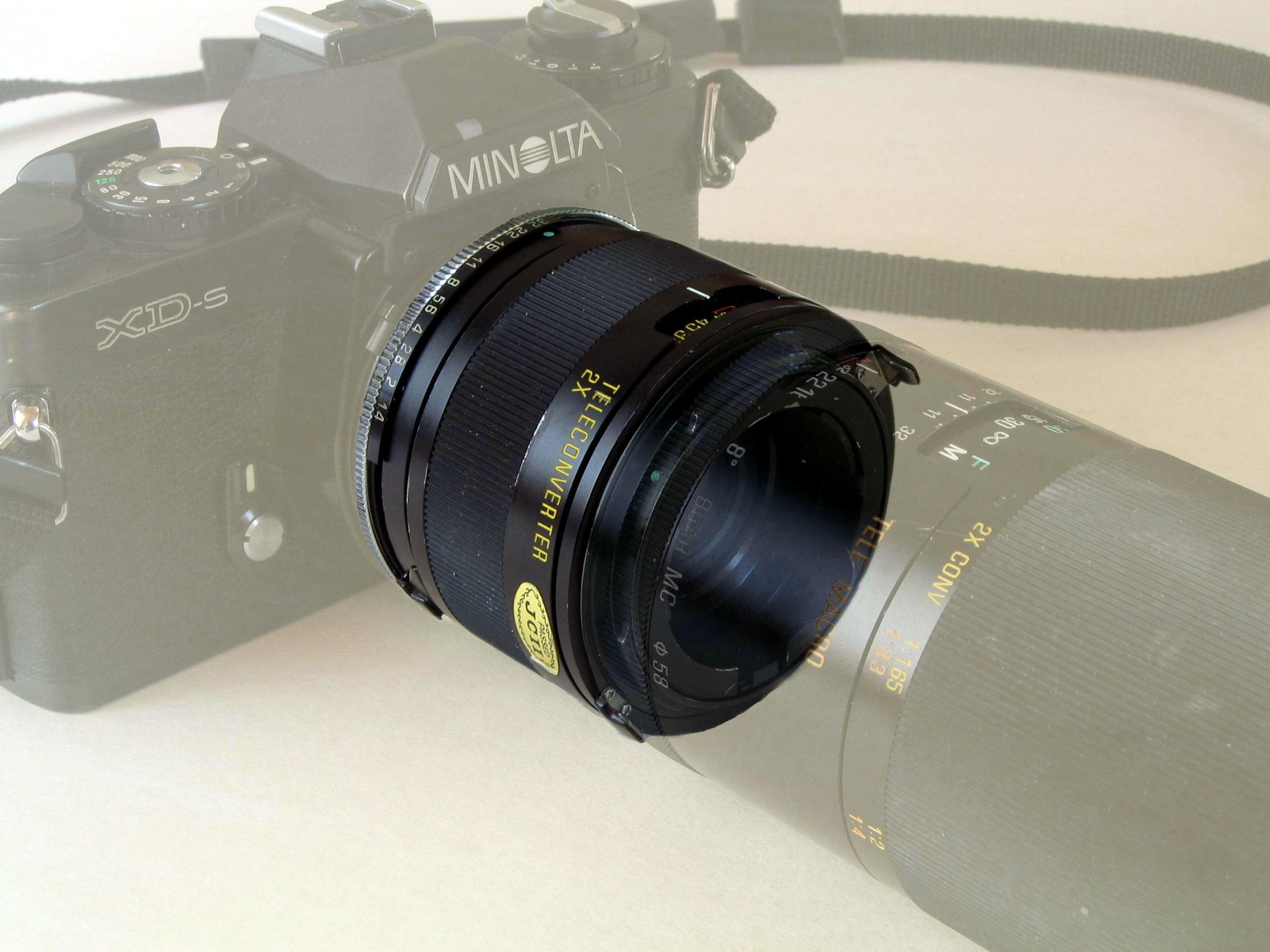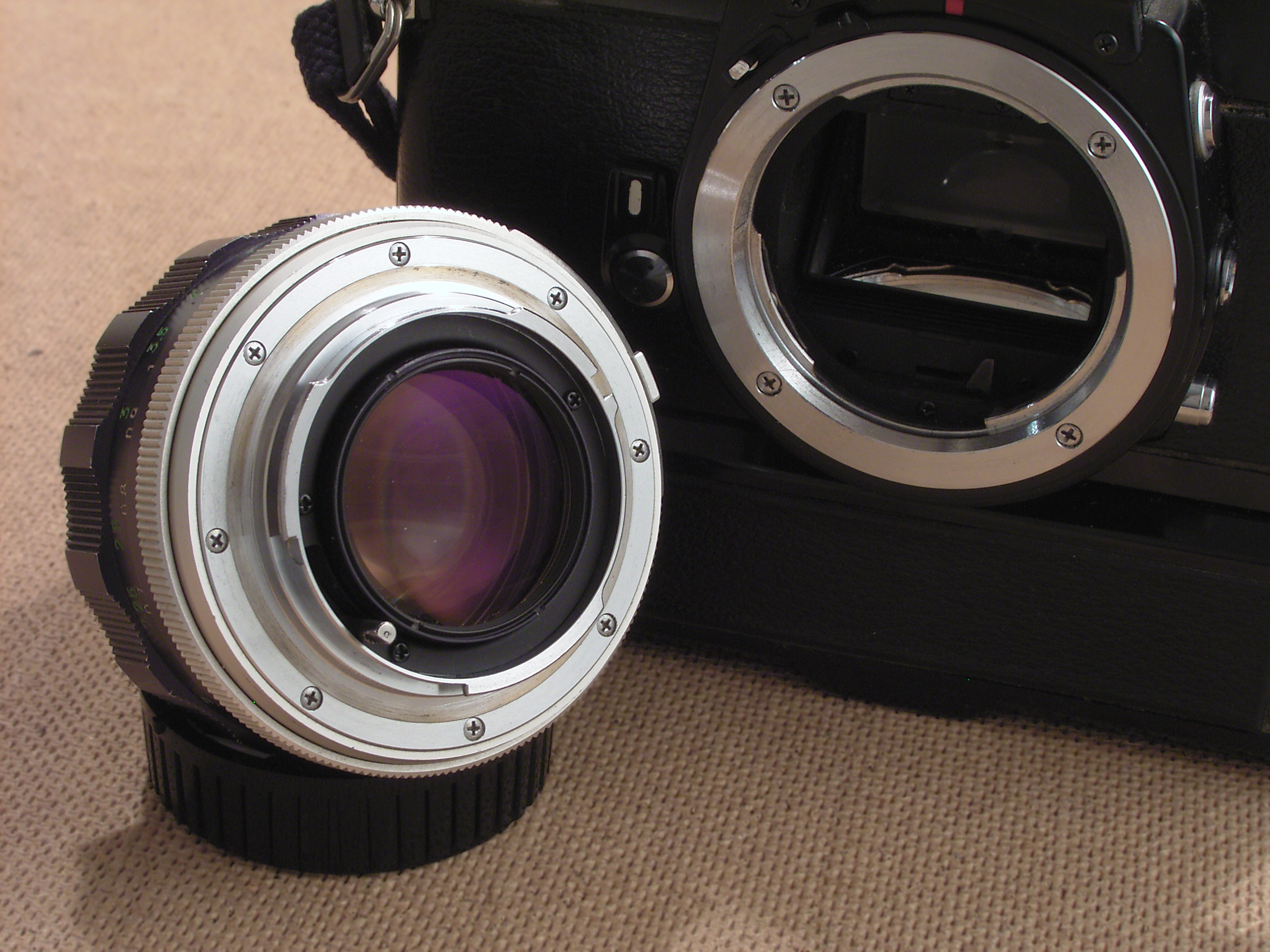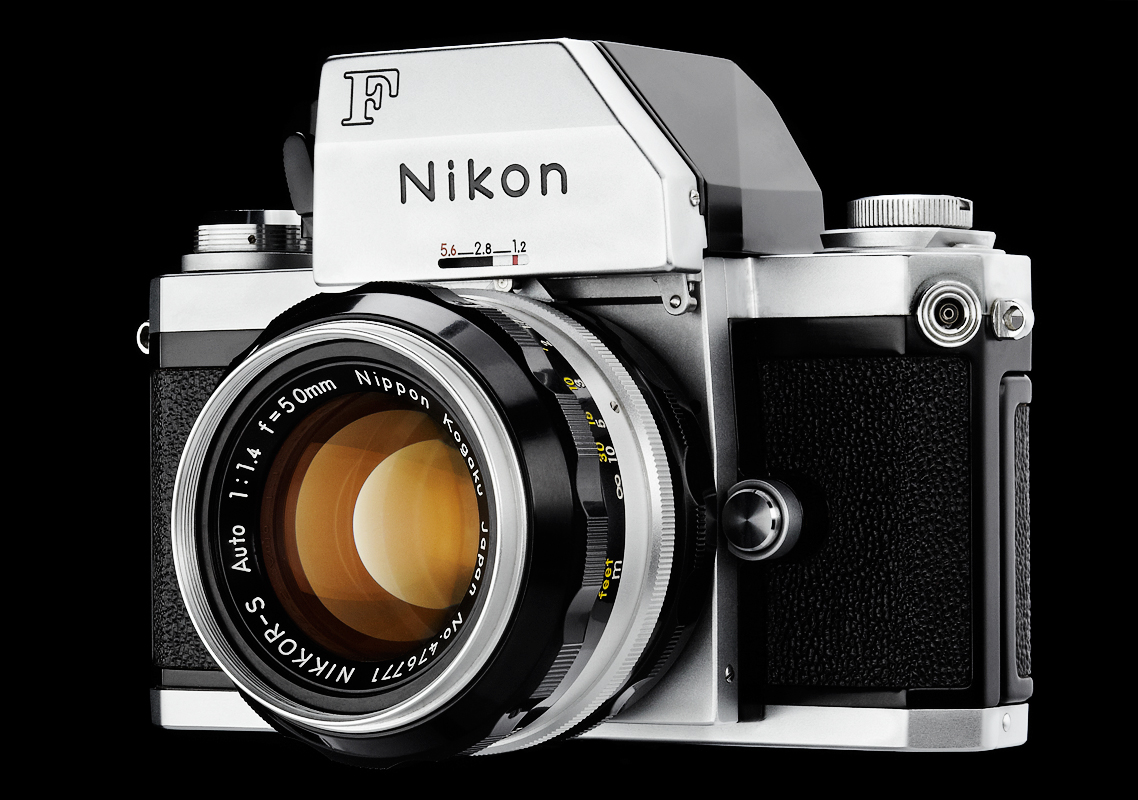|
Nikon 1 Mount
The Nikon 1-mount is a type of interchangeable lens mount developed by Nikon for its Nikon CX format mirrorless interchangeable-lens cameras. The 1-mount was first introduced on the Nikon 1 series in 2011, and features a bayonet mount. Compatibility to Nikon F-mount The F-mount adapter FT1 enables the use of all F-mount lenses especially with integrated autofocus motor. The FT1 adapter mounts and meters with all AI-P, AF, AF-S, D and G lenses and compatibles providing autofocus with all lenses with integrated autofocus motor. It further mounts Pre-AI, AI, AI-S and E lenses without metering as well as lenses which jut out the F-mount (needing mirror lock-up on cameras with mirror). Also although not recommended, it is used with teleconverters for extreme telephotos. Lenses Zoom lenses Power zoom lenses Prime lenses Third party lens Future lenses At the Nikon 1 launch in October 2011, Nikon showcased seven prototype lenses. As of October 2012, five of these prototype ... [...More Info...] [...Related Items...] OR: [Wikipedia] [Google] [Baidu] |
Nikon 1 Series
The Nikon 1 series is a discontinued camera line from Nikon, originally announced on 21 September 2011. The cameras utilized Nikon 1-mount lenses, and featured 1" CX format sensors. The series included the Nikon 1 V1, J1, J2, and S1 with a 10-megapixel image sensor, the V2, J3, S2 and AW1 with a 14-megapixel image sensor and further increased autofocus speed to 15 frames per second (fps), and the 1 V3, J4 with a new 18-megapixel image sensor, further increased autofocus speed to 20 fps, 120 fps HD slow-motion at 1280 x 720 and 1080/60p. The J5 model added a 20.8MP sensor in 2015 and kept most other technical specifications the same as the J4 model. At the time of announcement, Nikon claimed that the cameras featured the world's fastest autofocus, with 10 fps—even during videos—based on hybrid autofocus (phase detection/contrast-detect AF with AF-assist illuminator), as well as the world's fastest continuous shooting speed (60 fps) among all cameras with interchangea ... [...More Info...] [...Related Items...] OR: [Wikipedia] [Google] [Baidu] |
Teleconverter
A teleconverter (sometimes called tele extender) is a secondary lens mounted between a camera and a photographic lens which enlarges the central part of an image obtained by the lens. For example, a 2× teleconverter for a 35 mm camera enlarges the central 12×18 mm part of an image to the size of 24×36 mm in the standard 35 mm film format. Teleconverters are typically made in 1.4×, 1.7×, 2× and 3× variants, with 1.4× and 2× being the most common. A 2× teleconverter doubles the apparent focal length of a given lens. Teleconverters also decrease the intensity of the light that reaches the film plane (or sensor) by the square of its magnification. A 2× teleconverter reduces the light to 1/4, doubles the focal ratio and halves the resolution of the master lens it is connected to. This, however, does not necessarily halve the resolution of the digital image. A closely related device reduces the focal length. It is generally marketed under the name speed ... [...More Info...] [...Related Items...] OR: [Wikipedia] [Google] [Baidu] |
Lens Mounts
A lens mount is an interface – mechanical and often also electrical – between a photographic camera body and a lens. It is a feature of camera systems where the body allows interchangeable lenses, most usually the rangefinder camera, single lens reflex type, single lens mirrorless type or any movie camera of 16 mm or higher gauge. Lens mounts are also used to connect optical components in instrumentation that may not involve a camera, such as the modular components used in optical laboratory prototyping which join via C-mount or T-mount elements. Mount types A lens mount may be a screw-threaded type, a bayonet-type, or a breech-lock (friction lock) type. Modern still camera lens mounts are of the bayonet type, because the bayonet mechanism precisely aligns mechanical and electrical features between lens and body. Screw-threaded mounts are fragile and do not align the lens in a reliable rotational position, yet types such as the C-mount interface are still widely in use ... [...More Info...] [...Related Items...] OR: [Wikipedia] [Google] [Baidu] |
Nikkor
Nikkor is the brand of lenses produced by Nikon Corporation, including camera lenses for the Nikon F-mount. Nikko parent company brand, from which the Nikkor brand evolved. The ''Nikkor'' brand was introduced in 1932, a Westernised rendering of an earlier version ''Nikkō'' (日光), an abbreviation of the company's original full name ''Nippon Kōgaku'' ("Japan Optics"; 日本光学工業株式会社).The 75th Anniversary of NIKKOR Lenses'' (''Nikkō'' also means "sunlight" and is the name of a Japanese town.) In 1933, Nikon marketed its first camera lens under the Nikkor brand name, the "Aero-NIKKOR," for aerial photography. Nikon originally reserved the Nikkor designation for its highest-quality imaging optics, but in recent history almost all Nikon lenses are so branded. Notable Nikkor branded optics have included: * F-mount lenses for 35mm SLR and DSLR photography. For a full list see Nikon F-mount. * 1 mount lenses for Nikon CX format currently used by Nikon 1 series. * ... [...More Info...] [...Related Items...] OR: [Wikipedia] [Google] [Baidu] |
Image Sensor Format
In digital photography, the image sensor format is the shape and size of the image sensor. The image sensor format of a digital camera determines the angle of view of a particular lens when used with a particular sensor. Because the image sensors in many digital cameras are smaller than the 24 mm × 36 mm image area of full-frame 35 mm cameras, a lens of a given focal length gives a narrower field of view in such cameras. Sensor size is often expressed as optical format in inches. Other measures are also used; see table of sensor formats and sizes below. Lenses produced for 35 mm film cameras may mount well on the digital bodies, but the larger image circle of the 35 mm system lens allows unwanted light into the camera body, and the smaller size of the image sensor compared to 35 mm film format results in cropping of the image. This latter effect is known as field-of-view crop. The format size ratio (relative to the 35 mm film format) is k ... [...More Info...] [...Related Items...] OR: [Wikipedia] [Google] [Baidu] |
Nikon 1 Nikkor VR 10-100mm F/4
(, ; ), also known just as Nikon, is a Japanese multinational corporation headquartered in Tokyo, Japan, specializing in optics and Photography, imaging products. The companies held by Nikon form the Nikon Group. Nikon's products include cameras, camera lenses, binoculars, microscopes, ophthalmic lenses, measurement instruments, rifle scopes, spotting scopes, and the steppers used in the photolithography steps of Semiconductor device fabrication, semiconductor fabrication, of which it is the world's second largest manufacturer. The company is the eighth-largest chip equipment maker as reported in 2017. Also, it has diversified into new areas like 3D printers, 3D printing and regenerative medicine to compensate for the shrinking digital camera market. Among Nikon's many notable product lines are Nikkor imaging lenses (for Nikon F-mount, F-mount cameras, large format photography, photographic enlargers, and other applications), the Nikon F-series of 35mm format, 35 mm film SLR ... [...More Info...] [...Related Items...] OR: [Wikipedia] [Google] [Baidu] |
Nikon 1 V1 With 10-30 And 30-110mm
(, ; ), also known just as Nikon, is a Japanese multinational corporation headquartered in Tokyo, Japan, specializing in optics and Photography, imaging products. The companies held by Nikon form the Nikon Group. Nikon's products include cameras, camera lenses, binoculars, microscopes, ophthalmic lenses, measurement instruments, rifle scopes, spotting scopes, and the steppers used in the photolithography steps of Semiconductor device fabrication, semiconductor fabrication, of which it is the world's second largest manufacturer. The company is the eighth-largest chip equipment maker as reported in 2017. Also, it has diversified into new areas like 3D printers, 3D printing and regenerative medicine to compensate for the shrinking digital camera market. Among Nikon's many notable product lines are Nikkor imaging lenses (for Nikon F-mount, F-mount cameras, large format photography, photographic enlargers, and other applications), the Nikon F-series of 35mm format, 35 mm film SLR ... [...More Info...] [...Related Items...] OR: [Wikipedia] [Google] [Baidu] |
Photographic Lens
A camera lens (also known as photographic lens or photographic objective) is an optical lens or assembly of lenses used in conjunction with a camera body and mechanism to make images of objects either on photographic film or on other media capable of storing an image chemically or electronically. There is no major difference in principle between a lens used for a still camera, a video camera, a telescope, a microscope, or other apparatus, but the details of design and construction are different. A lens might be permanently fixed to a camera, or it might be interchangeable with lenses of different focal lengths, apertures, and other properties. While in principle a simple convex lens will suffice, in practice a compound lens made up of a number of optical lens elements is required to correct (as much as possible) the many optical aberrations that arise. Some aberrations will be present in any lens system. It is the job of the lens designer to balance these and produce a desi ... [...More Info...] [...Related Items...] OR: [Wikipedia] [Google] [Baidu] |
Telephoto
A telephoto lens, in photography and cinematography, is a specific type of a long-focus lens in which the physical length of the lens is shorter than the focal length. This is achieved by incorporating a special lens group known as a ''telephoto group'' that extends the light path to create a long-focus lens in a much shorter overall design. The angle of view and other effects of long-focus lenses are the same for telephoto lenses of the same specified focal length. Long-focal-length lenses are often informally referred to as ''telephoto lenses'', although this is technically incorrect: a telephoto lens specifically incorporates the telephoto group. Telephoto lenses are sometimes broken into the further sub-types of short telephoto (85–135 mm in 35 mm film format), medium telephoto: (135–300 mm in 35 mm film format) and super telephoto (over 300 mm in 35 mm film format) . Construction In contrast to a telephoto lens, for any given focal lengt ... [...More Info...] [...Related Items...] OR: [Wikipedia] [Google] [Baidu] |
List Of Nikon F-mount Lenses With Integrated Autofocus Motors
The following list of Nikon F-mount lenses with integrated autofocus motor includes only Nikon F-mount lenses which fully autofocus in all modes of all Nikon F-mount digital single-lens reflex cameras with and also ''without'' an autofocus motor. Cameras lacking an integrated autofocus motor are the Nikon D40, D40X, D60, Nikon D3xxx series (the latest model of which is the D3500), Nikon D5xxx series (the latest model of which is the D5600) and all Nikon 1 series cameras with FT1 adapter. Fully supporting these cameras all AF-S (introduced 1996), AF-P (introduced 2015), and the older AF-I (introduced 1992) Nikon Nikkor lenses are clearly designated including the necessary autofocus motor. Other manufacturers have different or ''no designations'' for lenses including a focus motor. All here not listed AF lenses without an autofocus motor do work fully, but lack autofocus-function on these cameras. Instead an electronic rangefinder can be used to find focus. Additionally all len ... [...More Info...] [...Related Items...] OR: [Wikipedia] [Google] [Baidu] |
Nikon CX Format
The Nikon CX format is an image sensor format by Nikon for the Nikon 1 series MILCs featuring the Nikon 1 mount bayonet and lenses. With 2.7 times crop factor being approximately 13.2 x 8.8mm2 Nikon USA (also known as 1"-type) it considerably increases the by 2.90 (2.7 times |
Nikon F-mount
The Nikon F-mount is a type of interchangeable lens mount developed by Nikon for its 35mm format single-lens reflex cameras. The F-mount was first introduced on the Nikon F camera in 1959, and features a three-lug bayonet mount with a 44mm throat and a Flange focal distance, flange to focal plane distance of 46.5mm. The company continues, with the 2020 D6 model, to use variations of the same lens mount specification for its film and digital single-lens reflex camera, digital SLR cameras. History The Nikon F-mount is one of only two SLR lens mounts (the other being the Pentax K-mount) which were not abandoned by their associated manufacturer upon the introduction of autofocus, but rather extended to meet new requirements related to light meter, metering, autofocus, and aperture control. The large variety of F-mount compatible lenses makes it the largest system of interchangeable flange-mount photographic lenses in history. Over 400 different Nikkor lenses are compatible with th ... [...More Info...] [...Related Items...] OR: [Wikipedia] [Google] [Baidu] |










